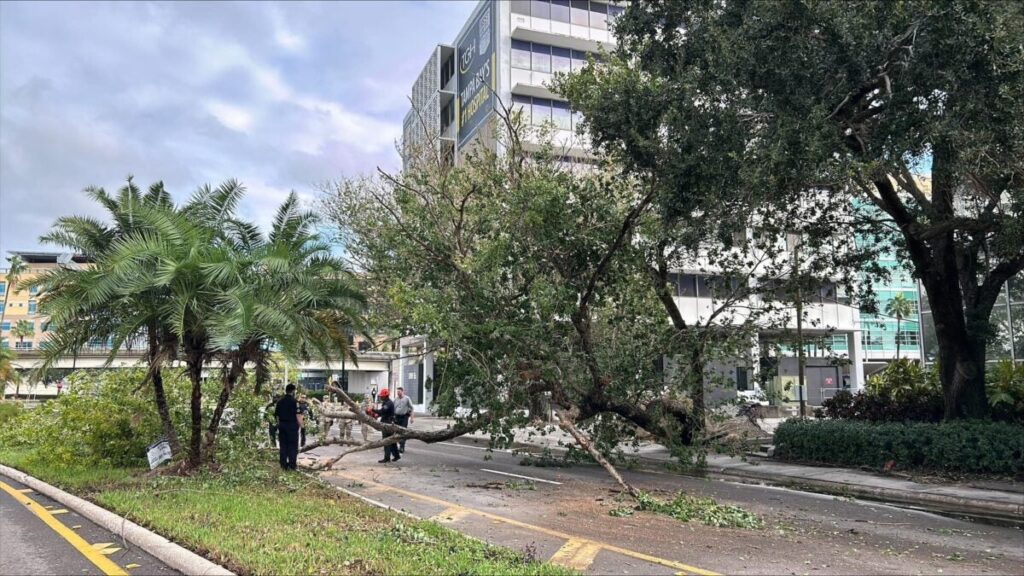Hurricane Milton has emerged as a significant natural disaster, causing an estimated $160 billion to $180 billion in damage and economic loss, according to preliminary assessments by AccuWeather. It struck Florida as a Category 3 hurricane on a Wednesday night, leaving extensive devastation in its path. The storm’s destructive impact follows closely on the heels of Hurricane Helene, which had already inflicted around $225 billion in damages just weeks earlier. The two hurricanes together account for an astonishing estimated total loss of roughly 2% of the United States’ GDP, underscoring the enormity of the economic ramifications of such weather events. Joel N. Myers, founder of AccuWeather, commented on this unparalleled financial impact in a statement, highlighting the scale and timing of these disasters.
The immediate consequences of Hurricane Milton included widespread power outages, with approximately 2.4 million residents and businesses in Florida left without electricity as of Friday, according to PowerOutage.us. The hurricane brought destructive winds that severely impacted the state’s infrastructure, causing blackouts across multiple communities. As a result, the availability of gasoline diminished significantly, with over a quarter of gas stations in Florida completely out of fuel. Areas like Tampa and St. Petersburg were particularly hard hit, experiencing fuel shortages in around 75% of gas stations, posing challenges for local residents trying to navigate the aftermath of the storm.
In addition to the human and infrastructural toll, the agricultural sector in Florida faced considerable damage due to Hurricane Milton. This comes at a particularly detrimental time when farmers are still recovering from the losses inflicted by Hurricane Helene, which had already decimated crops and livestock. Notably, the Florida Farm Bureau reported significant damage following Helene, affecting various agricultural products, including poultry, cattle, and citrus fruits. With Milton’s damage compounding these challenges, prices for fruits and vegetables in stores may increase in the upcoming weeks as supply becomes limited. Insights from David Spencer, a market intelligence vice president at Arrive Logistics, suggest that the long-term impacts on agricultural equipment, notably open-deck and flatbed equipment, will be particularly notable in the post-storm market conditions.
The disruption of logistics and supply chains due to Hurricane Milton has led to operational difficulties at key Florida ports, which had to shutter operations ahead of the storm. Although some ports, like Port Tampa Bay, control significant portions of the fuel supply for the state, their power outages hindered their ability to function effectively even after the hurricane passed. Port authorities are in discussions with energy suppliers to expedite the restoration of power to essential fuel terminals. SeaPort Manatee, a major gateway for imports of fresh produce, faced similar challenges with power outages affecting its operations during and after the storm.
Additionally, major transport and logistics companies are feeling the impact of Hurricane Milton as well. FedEx announced the activation of contingency plans to manage disruptions to deliveries in Florida and the Southeast. The U.S. Postal Service suspended operations in various Florida ZIP codes during the storm, but some services resumed the day following Hurricane Milton’s passage. More than 900 ZIP codes were reported to have experienced disruptions, with multiple facilities closing for safety reasons. Companies like XPO Inc., Southeastern Freight Lines, and Schneider National also noted facility closures and limited operations while they assessed the extent of the damages incurred.
As the region begins to assess and recover from the devastation wrought by Hurricane Milton, the long-term economic implications will continue to unfold. With initial damage estimates already staggering, the combined effects of Hurricane Helene and Milton will likely strain economic resources, impact local businesses, and impede recovery efforts in various sectors. Experts anticipate that immediate relief needs will surge in the days following the disaster, but they also predict a return to normalcy in seasonal freight patterns as the logistics market adjusts to the aftermath. As Florida grapples with the compounded losses from these two destructive hurricanes, the path to recovery will be complex and will require coordinated efforts from government agencies, non-profits, and private sector stakeholders to restore the state’s essential services and economic stability.

